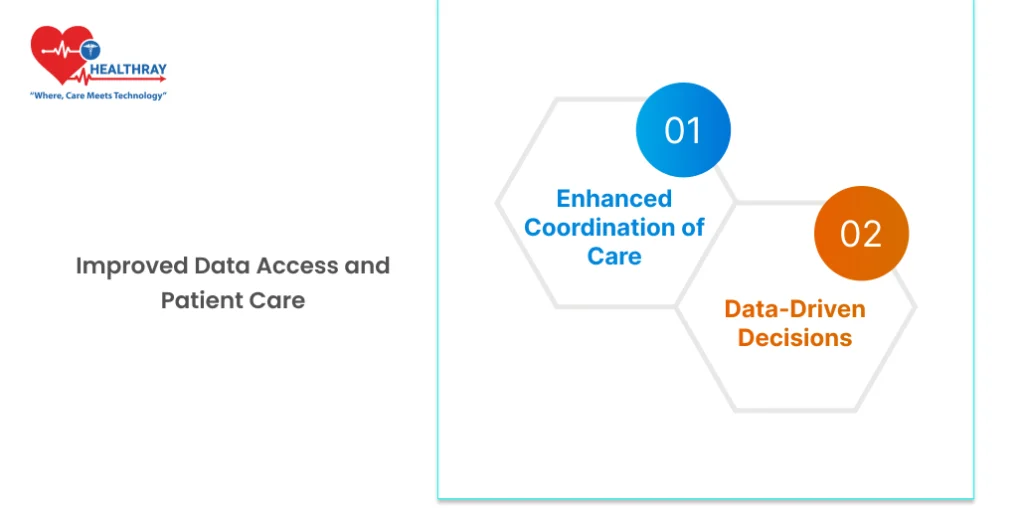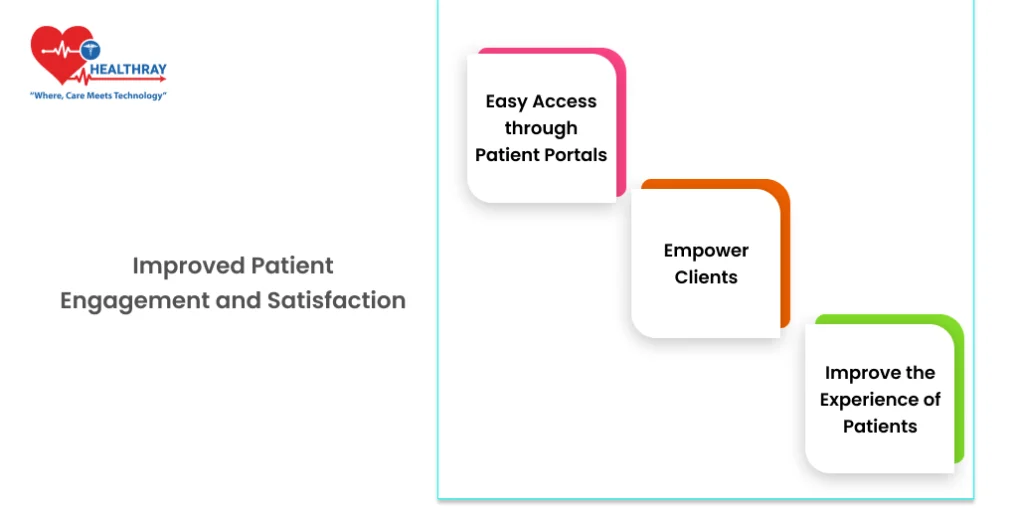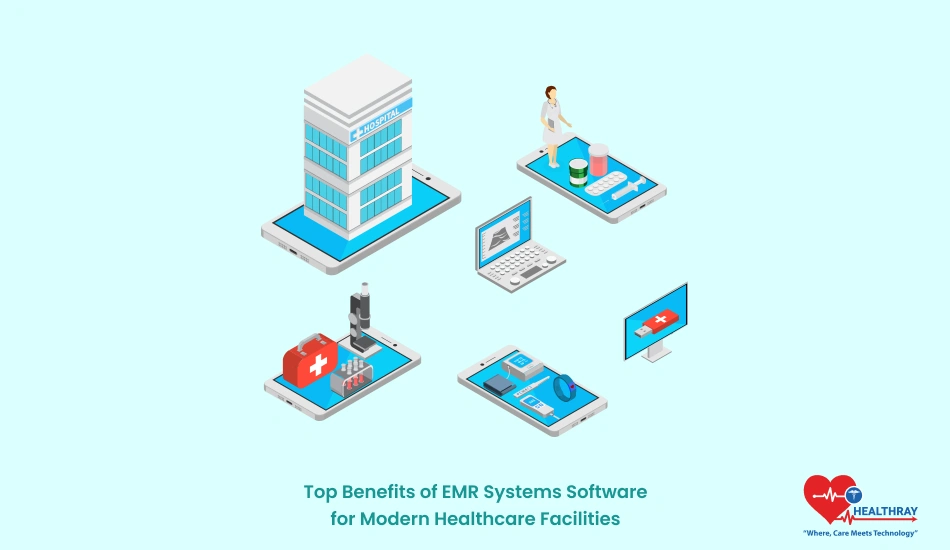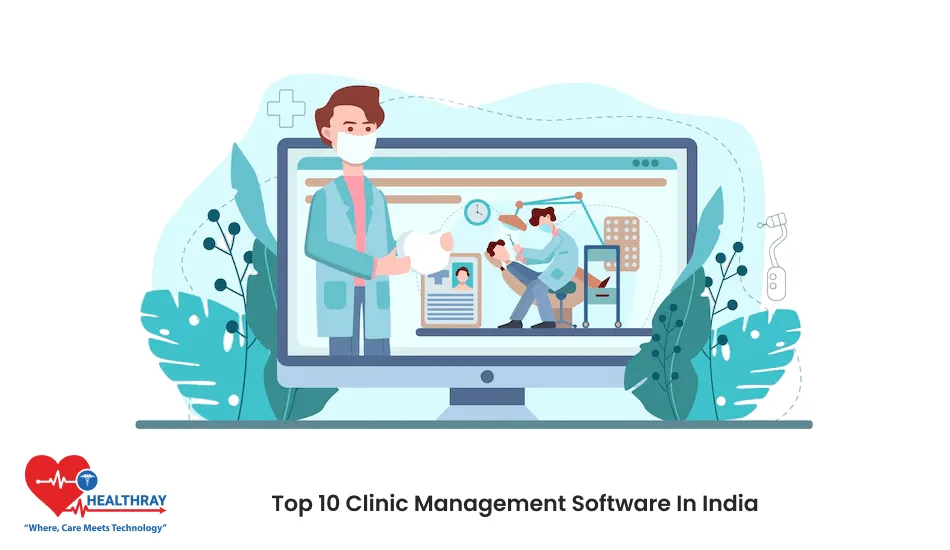Introduction
In the management of a health facility, efficiency, patient care, and compliance are everybody’s mind. Such challenges these days are handled through EMR systems, which are proving to be an essential thing. From the organization of patient records in one accessible place to automating administrative tasks, EMR Software systems simplify operations so that administrators and healthcare teams can work more smoothly.
So, why are more healthcare facilities making the switch to EMR software? The following article takes apart the top benefits showing how EMRs improve everything from patient engagement to operational efficiency. By the end, you’ll see just how best EMR software can streamline work and enhance patient care and financial stability for your facility.
Improved Data Access and Patient Care

This has a big difference in the health care sector due to the difference that it can make about quick accurate information from the patient. Access can be facilitated by using EMR systems where any authorized device can pull in real time the patient’s record. This is direct and indicates better and faster care offered to the patient.
Enhanced Coordination of Care
EMRs make it easy for different departments or facilities to access and share the same information of a patient. People will no longer dig through hard copies or chase after paper records. It is building a team of caregivers all on the same page that would surely and quite obviously enhance the quality of care itself.
Data-Driven Decisions
Healthcare facilities that use EMRs find that they make better, more informed decisions. The EMR keeps an historical record of the patient’s health and tells doctors about patterns, allergies, past treatments, and so on. Therefore, providers will be able to make more accurate diagnoses and tailor treatment better to optimize the achievement of desired outcomes. Providers no longer rely on what symptoms are currently present but view the whole picture of a patient’s health.
It also enhances access to data in emergent moments. Rather than relying on paper files, health care providers can easily obtain essential information right away whenever needed and thus save the precious time needed most during such instances.
Improved Operational Efficiency and Reduced Paperwork
EMR systems assist doctors, but at the same time make things flow smoothly around the facility. Routine jobs get automated and the data centralizes using the EMR software. The result is more time left over from what staff were hired for-patient care.
Smooth Processes
The EMR systems bring a stop to laborious paper works and the hands-on entry of data in the health industry. All patient information is now in one digital location and no longer has to be searched for in files or manually entered into several systems. Instead, patient information, treatment plans, and billing are automatically updated and saved and lighten the load of administrative tasks on staff. This process saves time and decreases human error, thus creating a more efficient setting in general.
Quick Patient Check-in and Billing
This has saved precious check-in and billing time. It is appreciable that the key administrative tasks, automated by the EMR, enable the fastest check-in ever of patients and billing with minimum back-and-forth and minimal delays. This faster service has been appreciated by the patients, and more patients can be seen with minimal compromise on the quality of care.
Paper Reduction and Cost Savings
The cost of saving the record is the third advantage of file digitization. A paper-free record may save time by comparison with hundreds of hours of filing work if an original paper file can be rather bulky in storage and require so many papers. A facility that can go paperless benefits from savings on those cost items while achieving today’s sustainability. In addition, any EMR is searchable.
Any file record can be accessed within a fraction of seconds compared to paper files whose hard copies might be impossible to access immediately. In a nutshell, EMR systems will bring efficiency through every area of a healthcare facility-from the front desk all the way to billing and all other areas.
Improved Security and Compliance with Regulations

Patient data is the most confidential information in the healthcare sector. There is no other safer system than EMR to secure that kind of sensitive information. Security features in EMRs ensure protection of patients’ privacy maintaining all standards of regulations.
Data Security
Most EMR software packages have multiple layers of protection including encryption and multi-factor authentication. These layers of protection safeguard data against unauthorized access in such a way that no unauthorized persons will be able to access or modify the patient’s records, thus protecting the data against breach. Healthcare administrators can thus have confidence over the fact that their patient data is safe not only in storage but also in transit.
HIPAA Compliance
One of the issues that healthcare organizations are concerned with is regulatory compliance, especially in keeping up with HIPAA, Health Insurance Portability and Accountability Act. Secondly, with access logs and automatic audit trails, who looked at what information and when is easily traceable; thus, it fosters transparency and accountability. With an EMR, much fewer frustrations in achieving compliance will be witnessed as the system itself complies with needed regulations.
Audit Trails for Accountability
Other than protecting data, EMRs also create a detailed record of their usage. On access, update, or delete a patient’s record, it is logged in. If something has ever gone wrong with accuracy or privacy, administrators should be able to trace back such trails to who made an interaction on the record and when. Transparency strengthens the integrity of data but also gives patients the assurance that their records are being treated with care.
Improved Revenue Cycle Management and Financial Health
One of the first issues that the health care setting encounters is revenue cycle management. The Electronic Medical Records System makes the bills, coding, and claims to make more flows smoothly. In other words, the facility would have a healthy life of finance while making sure that everything works backstage to free up the pain and stress that money sometimes gives administrators to be directed to quality care.
Efficient Billing and Coding
EMR systems automatically perform billing and coding. That reduces the chances of human errors that would not have encountered a claim denial. Most claims reports indicate that the biggest reason for the claim denial is in coding, and once further up on the denial process, it delays payments and adds extra administrative work. Errors are minimized by utilizing automated coding tools that are included in the EMR. Thus, it would process faster with fewer denials. Bottom line: predictable revenue stream for the facility and keeps it stable financially.
Fast Payments
The billing process will augment cash flow due to the reimbursement of the claims submitted for the first time a lot faster on the part of the insurance firms. This payment method, therefore, improves the management of every working expense on payments made to employees and capital funds for installing equipment, among many other things in hand. Payments are much easier because the EMR systems well maintained and operable facilitate the faster payments received throughout the firm.
Savings on the cost of Operational Expenses
Cost savings on time equate to cost savings on money. With EMR systems managing all these administrative tasks, facilities save money on labor in terms of record-keeping and billing. No need to have stacks of paper or space for storing these papers; the facility can enjoy some operational saving over time and thus have a healthier financial perspective.
Revenue cycle management can be optimized so that EMR systems become financially viable and hence, the core business of health facilities, quality patient care, can be guided.
Improved Patient Engagement and Satisfaction

Health care focuses on the patient experience and EMR systems present significant roles in enhancing the patient engagement and satisfaction levels. EMRs make it easier for patients to access their own health information and facilitate smoother communication processes. Patients now are also more in control of their journey of health care by using EMRs.
Easy Access through Patient Portals
Many EMR systems also have patient portals through which a patient can view their medical records, lab results, prescriptions, and future appointments on his or her device. The basic information of a patient from the health providers would not have to wait in the office for or wait for incoming calls. They can see their medical records in one or two clicks and thereby log into them-the element of trust and openness between a patient and health provider, so they will remain active in and be informed about care.
Empower Clients
With accessible health information, patients become able to be involved more actively in the decisions over their care. Patients are generally much more confident and ready for consultations if provided with an opportunity to look over treatment histories and test results. Most patients that become more engaged have a greater adherence to plans of treatment, and hence are healthier, considering that they perceive their care being valued.
Improve the Experience of Patients
EMR systems make every step of the patient’s pathway as smooth and seamless as possible. With fast check-ins and faster billing, patients wait less and experience fewer administrative roadblocks. In conjunction with effective, clear communication with the aid of patient portals, these improvements amount to a much more satisfying overall health care experience. Patients love the smoothness and professionalism and that results in more loyalty and good word of mouth for the facility.
Data Analytics for Proactive Health Management
Amongst EMR systems is the unveiling of hidden value insights in the data of patients. Software is not carrying about information files for the patients’ records; an EMR gives health facilities allowance to analyze and predict possible hits that may touch a patient with better management in populations of patients. Through data analytics, the administrator and provider are able to make informed decisions that may be proactive in support of care for an individual patient as well as a large population of the patients.
Care Better by Predictive Analytics
Using predictive analytics, EMRs allow healthcare teams to monitor patterns and risks among patient populations. For instance, an EMR system flags up a pattern of recurrences or high-risk indicators and thus enables the providers to intervene beforehand, preventing deterioration in the condition of the patient. Thus, the early intervention averts serious diseases from arising later on.
Population Health Management
This enables EMR systems to gather data from several patients to determine trends in larger populations of patients. The analysis of this data will enable facilities to understand the health needs of certain demographics, such as chronic conditions or seasonal trends in illness. From this, facilities can best use resources, start targeted health programs, and enhance care for all patient populations.
Continuous Quality Improvement
The EMRs help achieve continuous efforts towards quality improvement through data analytics. The administration is going to be able to check how the outcome metrics for patients appear, how the readmission rates are, and how the treatments are being made successful. Monitoring this will give facilities the opportunity to review their processes and then change the treatment for better care. So this allows this type of loop to provide learning, adjustments, and corrects healthcare teams as time continues to come through.
Scalability and future-proofing
Health care is constantly changing, so do the requirements placed on health care technology. Because EMR systems grow as an office grows, they are sharp investments in the long run. The ability to adapt and include the newest technologies makes health care facilities as flexible as the shifting oceans of health care.
Scalable solutions for expanding campuses
No matter the reason to spread its wings across new areas, high patient inflow, or emergence of new specializations, an EMR system scales to meet those demands. Unlike paper-based records and old software, which strain under growing capacity, an EMR accommodates the growth needs of a facility without necessarily undertaking massive overhauls. Under this consideration, the flexibility of the system indicates that the healthcare providers do not have to fear their system becoming out-of-date because it is expensive and time-consuming if it is undertaken in major overhauls.
Compatibility with New Technologies
The EMR systems are expected to be compatible with current technological advancements. This means facilities can easily adapt tools like artificial intelligence, telemedicine, and advanced diagnostic software. With such innovations in technologies, EMRs make it possible for facilities to have these systems installed without altering the current workflow of the facility. For instance, telemedicine integration enables the EMR to offer providers virtual visits but with unbridled access to patient records. This adaptability makes it possible for the facilities to compete and respond accordingly to the latest approaches to patient care.
Cost efficiency in the long term
The long-term financial benefits of an EMR system also result from not having to continually replace an EMR or have it highly customized since a scalable EMR will evolve with changing healthcare needs. Savings in capital on future technology overhauls ensure that institutions do not fritter away their money and reap maximum return on investment within an EMR.
Conclusion
EMR systems change the face of health care since it makes data more manageable, streamlines operations, and assists in achieving better patient outcomes. From easy accessibility of data to improvement in its financial health, the benefits of EMRs are very clearly seen. The paperwork time would subsequently reduce, and more secure data along with the facility will be prepared for future, hence both these along with the proper implementation of the complete Hospital Management System. Operations at healthcare facilities would always focus on delivery of quality care possible to achieve. Obviously prudent investments, an investment like the EMR had been an essential for quite some time now. Adding an EMR system and a robust Hospital Management System means uplift for patient care and satisfaction; thus, facility setup ensures longer term prosperity and a changing face, in tune with time and constant advancements made therein. They are not only a step to high tech but to very important health care, modernism, and efficiency.





